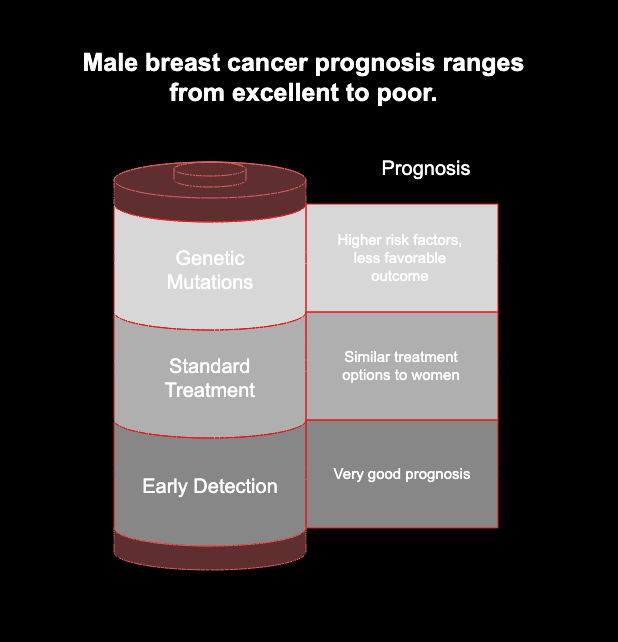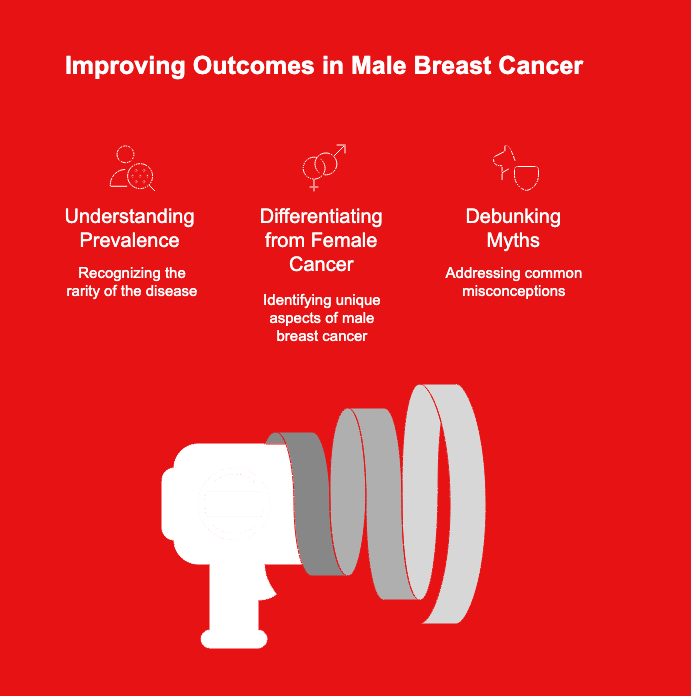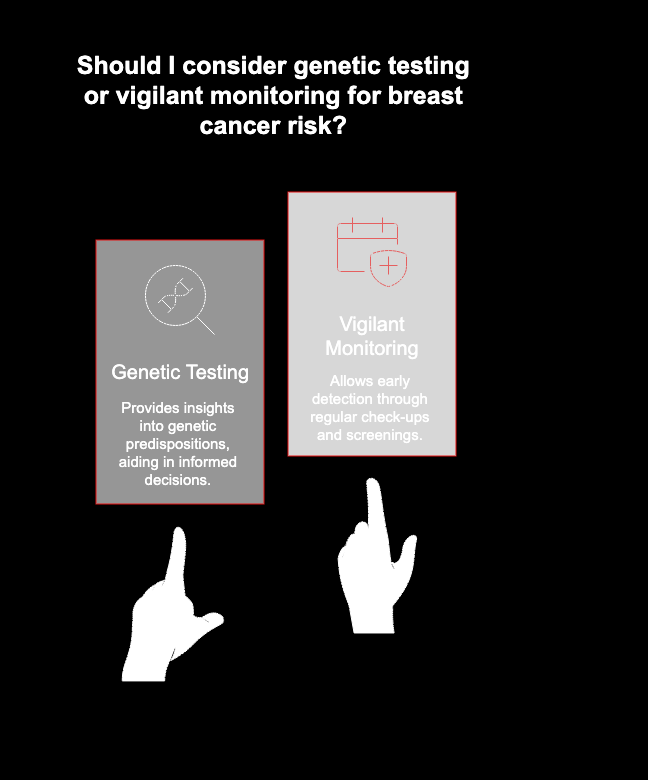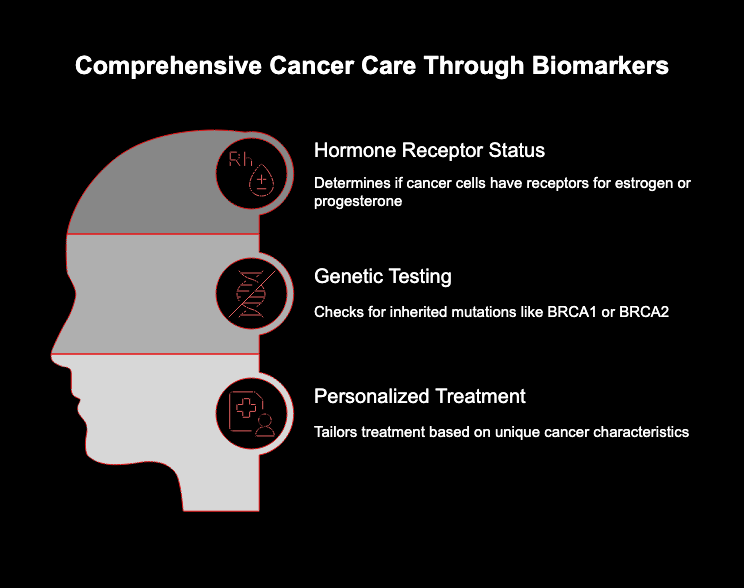Key Highlights
- Male breast cancer is not common. It makes up less than 1% of all breast cancer cases in the United States.
- Some symptoms of breast cancer in men can be a painless lump in the male breast, nipple discharge, or changes to the breast skin.
- A big risk factor is a family history of breast cancer. Other risk factors are certain genetic changes and things that can make estrogen levels in the body higher.
- Treatment options used for male breast cancer are a lot like the treatments used for women. These include surgery, radiation, chemotherapy, and hormone therapy.
- When male breast cancer is found early, the outlook is very good. This means it’s important to know the symptoms of breast cancer and to be aware of the risk factors like a family history of breast and high estrogen levels.

Introduction
Many people say breast cancer only happens to women. But men also have a small amount of breast tissue, so they can get breast cancer in the male breast. Breast cancer is not as common in men as it is in women, but it is still important for you to know the risks and spot the symptoms of male breast cancer. If you learn what signs to watch out for, you can help catch it early and get better results from treatment. This guide will help you understand what you need to know about male breast cancer, the symptoms of male breast cancer, and how to take care of your male breast.
Overview of Breast Cancer in Men
Male breast cancer happens when harmful cells grow in the breast tissue of men. A man does not have breasts that make milk, but his breast tissue can still change and get cancer. The risk of male breast cancer is lower than it is for women. But men often find out about it later. A lack of awareness can lead to male breast cancer being found only after it has grown. Because of this, male breast cancer usually has a higher death rate than breast cancer in women.
Knowing about this disease is the first thing you need to do to get better results. Knowing how common it is, how breast cancer in men is not the same as in women, and the myths people have about it can help you feel more in control of your health. Let’s look at what breast cancer means for men, go over the numbers, and clear up what people often get wrong about it.

How Male Breast Cancer Differs from Female Breast Cancer
While breast cancer is mostly the same for men and women, there are a few big differences. A main one is when the disease gets found. Men often get told they have breast cancer at a later stage. This happens because the men may not know they can get breast cancer, so they do not get routine screening mammograms. The late diagnosis really affects how well the treatment works.
The way the male breast is built is also important. Men have a small amount of breast tissue. This means if there is a tumor, it can reach the nipple, skin, or chest wall more quickly. You can see changes sooner in a male breast. But if you do not get it checked, the tumor can be more aggressive.
The most common type of breast cancer in men is invasive ductal carcinoma. This is also the case for women. But almost all cases of male breast cancer are estrogen receptor-positive. This means that hormone therapy is very important in treating male breast cancer. The cancer cells grow when they get estrogen. So, hormone therapy helps control how cancer cells work in the male breast.
Causes and Risk Factors for Male Breast Cancer
It can be hard to know the exact cause of breast cancer in each person. Still, researchers say there are some risk factors you should think about. A man’s risk of getting breast cancer can go up because of his genes, his family history, or the way he lives. Some medical issues that someone already has can also raise the risk.
Having one or more risk factors does not mean that you will get breast cancer for sure. It is important to know about these risk factors so you can talk to your doctor about your health. If you know your own risk, you and your doctor can decide if things like genetic testing or careful checkups are right for you. Let’s look at these risk factors in more detail.

Signs and Symptoms to Watch For
Because men do not get breast cancer checks often, it is very important to know the signs to catch it early. A lump can be the most common sign, but it is not the only thing you need to look out for. If you notice any change in how your breast, nipple, or the area around your chest looks or feels, you should not ignore it. These changes could be signs of breast cancer.
It can be easy for people to not pay attention to these changes. But not looking at them could mean that a diagnosis comes too late. Try to know the symptoms of breast cancer. These include changes in the breast skin or nipple discharge. If you see any of these, you will know when it is time for you to visit your doctor.
Understanding Staging and Tumor Grades
After you get a breast cancer diagnosis, your care team will figure out the stage of the cancer. Staging matters because it shows how much cancer you have and how far it is in your body. The stage is given as a number from 0 to 4. A lower number means the cancer is not as advanced.
Staging looks at the size of the tumor. It also checks if cancer cells have moved to nearby lymph nodes. It finds out if cancer is in other parts of the body like bones, liver, or lungs. This helps doctors choose the best way to treat it.
The cancer is given a stage and also a tumor grade. The grade, which is either 1, 2, or 3, shows how different the cancer cells are when looked at under a microscope. This helps doctors know how fast the cancer might grow and spread. A lower grade usually means that the cancer grows more slowly. This can also mean a better chance for you to get well.
Biomarker Testing and Its Role
Modern cancer care is not only about finding out the type and stage. It also looks at cancer cells in more detail. Biomarker testing can show what makes your cancer different. These tests check your tumor tissue for certain proteins or genes. These may play a part in how cancer grows.
For male breast cancer, the hormone receptor status is one of the key things doctors look at. The test shows if the cancer cells have an estrogen receptor (ER) or a progesterone receptor (PR). Almost all male breast cancers are ER-positive. This means the cancer grows when it gets estrogen. This helps guide your treatment plan because it shows that hormone therapy should work well.
Other biomarker tests may be done too, and your doctor can talk with you about genetic testing. Genetic testing looks for changes that you might have, like BRCA1 or BRCA2. The results from these tests help your doctor find the best plan for your treatment. This way, your care is made just for you and is focused on what you need.

Treatment Options for Men with Breast Cancer
If you find out that you have male breast cancer, you will work with your doctor to create a treatment plan. Most treatment options for men are the same as those for women. Your treatment depends on the type of cancer, the stage it is in, and what is special about your cancer.
The main aim of male breast cancer treatment is to take out the cancer and stop it from coming back. You will likely have a mix of treatments. These often include surgery, radiation, chemotherapy, and hormone therapy. Let’s talk more about the key cancer treatment options for male breast cancer.
Conclusion
Understanding breast cancer in men is important. You need to know the signs, symptoms, and risk factors about male breast cancer. This cancer is often not talked about as much as it is in women, but it’ s just as serious. Early detection of male breast cancer can help save lives. When you know what to look for and learn about how breast cancer shows up in men, you will be ready to act or help others around you.
Learning more about male breast cancer also helps you get familiar with things like how common it is, what can cause it, and the treatment options you have. These facts can make you feel confident about your health and will help those close to you.
If you ever notice changes in your male breast or feel worried about anything new or strange, you should contact a healthcare professional right away. If you’ re interested in learning more about breast health or want answers to your questions, you could book a free consultation with our experts. They’ ll talk about any concerns you’ ve got about male breast cancer.
Frequently Asked Questions
What should men know about early warning signs?
Men need to know that the top sign of male breast cancer is a firm and painless lump in the male breast or under the arm. You should watch for changes to your breast skin. A turned-in nipple or any discharge can also be signs. It is very important to notice these things early, as there is no regular checkup for men for this cancer.
Is breast cancer in men hereditary?
Yes, men can get breast cancer from their family. A family history of breast cancer is one thing that makes the risk higher. A gene mutation like BRCA1 or BRCA2 is often the cause. If there is a strong family history of breast cancer, your doctor may ask you to get genetic testing. This helps find out your own risk of breast cancer.
Are there support groups for men diagnosed with breast cancer?
Yes, there are support groups that help men with breast cancer. Groups like the Male Breast Cancer Global Alliance and HIS Breast Cancer Awareness give men with breast cancer support, useful resources, and a place to talk with others. You can ask your care team or a cancer society nearby. They can help you find these groups and get support for male breast cancer patients.


